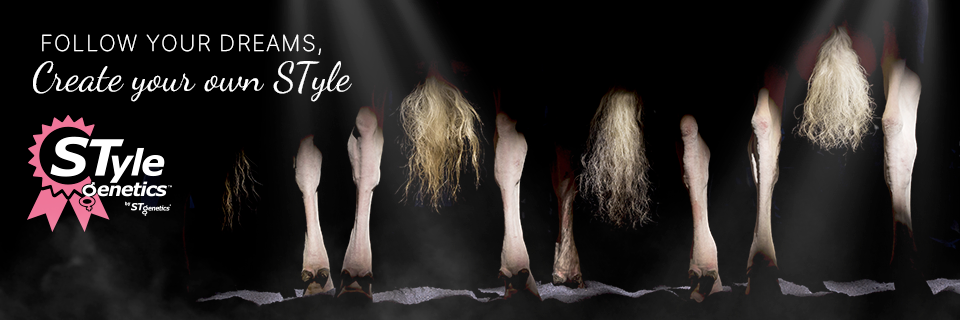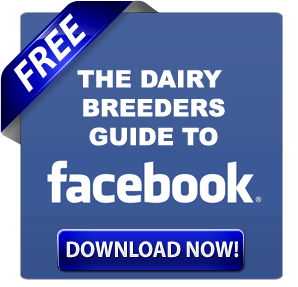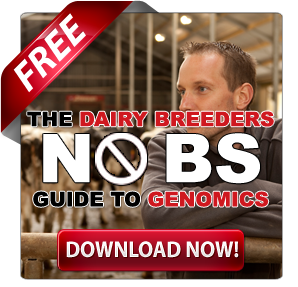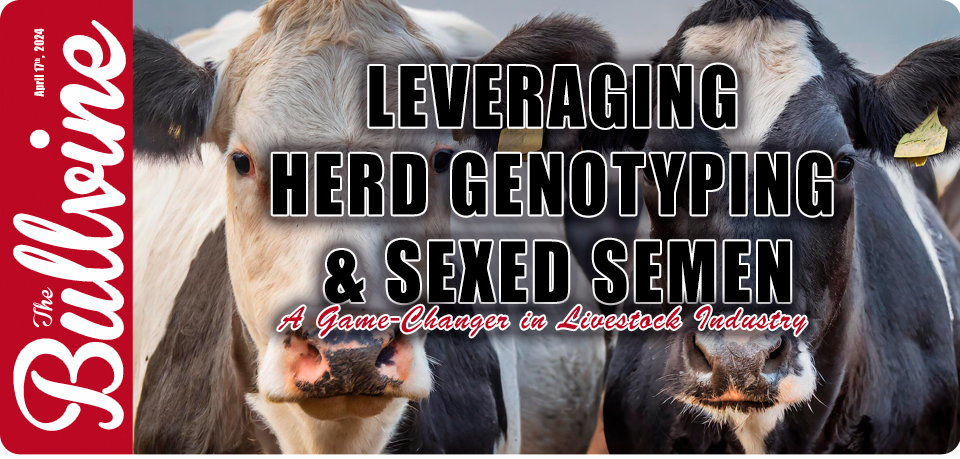
Discover how herd genotyping and sexed semen are revolutionizing the livestock industry. Learn about their economic benefits for pure and beef-on-dairy breeding.
Advancements in reproductive technologies like herd genotyping and sexed semen are generating a remarkable revolution in the dairy and beef industries. Far from simply being evolutionary steps, these technologies have been transformative, marking a revolution in pure breeding and beef-on-dairy operations. They are agents of change — ones that significantly impact the heart of the industry — the genetic pool, while also influencing the financial viability of dairy and beef operations.<
The aim of this article is not just to provide an overview of these innovations, but to delve deeper, exploring how they can dictate the future of purebred breeding and beef-on-dairy operations. The potential of these technologies goes beyond their immediate application; they are shaping the progression of agricultural advancements, setting a precedent for future breakthroughs.
“Herd genotyping and sexed semen — more than just technologies, they are potent agents of change, impacting both the genetic diversity and financial sustainability of the dairy and beef industries.”
As we delve into this topic, we will navigate through the specifics of herd genotyping and the role of sexed semen, their combined impacts on breeding and the transformation of beef-on-dairy breeding. A special spotlight will be on the economic and environmental benefits these bring to the industry.
Understanding Herd Genotyping
Herd genotyping, which utilizes DNA analysis, ushers in a new era of precision in dairy cattle breeding. This innovative technology serves as a tool for distinguishing specific traits in our bovine friends, traits that can either be amplified or diminish, depending on what’s ideal for future generations.
Genotyping can increase the accuracy of genetic evaluations by 28%
With the aid of herd genotyping, productivity bounds can be pushed, disease resistance can be fortified, and milk quality can be elevated to new standards. This is achieved by analyzing and understanding the herd’s genotype, which allows for meticulous and informed breeding decisions.
Imagine being able to breed with particularity, to hand-pick the traits that best suit the needs and health of your herd. That’s the power of herd genotyping—crafting herds that are healthier, stronger, and more resistant to diseases. Essentially, we are able to sculpt our cattle according to our preferences, just as an artist passionately shapes clay into pottery.
But the wonders of herd genotyping are not restricted to just health and strength, it also impacts longevity and performance. Consider it as an investment into the future, shaping the evolution and bolstering the populations of our dairy cattle, while simultaneously securing a promising return on investment.
The Role of Sexed Semen
As the dairy industry has evolved, the use of sexed semen has become a landmark innovation that is transforming the agricultural landscape. This breakthrough technology empowers dairy farmers with the ability to influence the sex of their future calves, predicated upon their individual X or Y chromosomes. This technique is exceedingly beneficial for the dairy sector, where the value of a female calf – colloquially known as a heifer – far outweighs that of a male one.
Sexed semen can increase the proportion of female calves by up to 90%
The primary appeal of sexed semen is that it significantly increases the odds of breeding female calves, which are preferred in the dairy industry due to their inherent potential to produce milk. By utilizing sexed semen, farmers can optimize their breeding strategies to push towards a more female-centric offspring output, thus enhancing milk production efficiency. This outcome not only decreases the excess production of male calves but also contributs to effective resource management.
The use of sexed semen can reduce the number of unwanted male calves by 85%
This strategic application of sexed semen aids farmers in steering their dairy operations towards escalated productivity. In essence, sexed semen optimizes the dairy farming model by aligning genetic selection and gender control, ultimately leading to more streamlined operations and profitable results. So, the entry of sexed semen into the fray is undeniably a game-changing force in the modern dairy industry.
Economic and Environmental Benefits
On considering the cost efficacy of herd genotyping and the advantages of using sexed semen, we find that they’ve been significantly transformed by advancements in sexing technologies, the incorporation of direct health traits in the German Total Merit Index for Holstein cattle, diminishing prices for purebred heifer calves and bull calves, and the inauguration of herd genotyping programs.
Utilizing female-sexed Holstein semen to inseminate genetically superior dams augments the average breeding value of heifer calves and leads to the production of more Holstein heifer calves than the replacement number required. This creates a golden chance to enhance the selection response for health and productivity traits at the farm level. A deterministic model that forecasts the increment or decrement in net profit when a farmer participates in a herd genotyping program and adheres to a specific insemination strategy has been introduced into the equation.
The types of semen allocated to cows and heifers may include sexed or unsexed, Holstein or beef breed. Genetically superior heifers and cows are inseminated with female-sexed Holstein semen, intermediate dams with unsexed Holstein semen, and genetically inferior dams with unsexed or male-sexed beef breed semen.
Participation in a herd genotyping program is beneficial for German Holstein breeders, in general. The optimal proportions of cows and heifers to be inseminated with a certain type of semen are sensitive to the specific peculiarities of different farms. A minor price gap between crossbred bull calves and crossbred heifer calves often makes the use of male-sexed beef breed semen uneconomical. It was found advantageous to inseminate about 50% of heifers and 10% of cows with the highest genetic merit with female-sexed Holstein semen under conditions that were taken into consideration. Unsexed beef breed semen is best used for approximately 40% of cows that are to be inseminated. (Read more: Economic benefits of herd genotyping and using sexed semen for pure and beef-on-dairy breeding in dairy herds)
In a herd with a low replacement rate, the selected heifers can manifest their genetic superiority for a more extended period, allowing for a larger proportion of cows to be inseminated with beef breed semen. Given this, participation in a herd genotyping program can be especially advantageous for herds maintaining a low replacement rate.
Transformation in Beef-on-Dairy Breeding
As you see, beef-on-dairy breeding has been garnishing significant attention due to its planned and strategic nature. This unique approach involves using beef breed sires with dairy breed females to generate offspring catered to meet the standards of the beef market. You might be asking yourself, why does this matter to me? First off, this innovative method results in heightened market value and delivers concrete economic advantages.
Beyond the economic impact, there are closely related benefits one cannot overlook as well. This is where herd genotyping enters the scene. It aids in making educated breeding choices by ensuring phenomenal growth rates and unrivaled meat quality in the offspring that are produced. Interestingly, the strategic pairing of genotyping and sexed semen is a revolutionizing the dairy farm industry.
One might wonder how sexed semen technology fits into this narrative. The answer is fairly simple – it works by effectively optimizing herd resources. The use of sexed semen technology ensures the production of female dairy calves for replacement, which allows the remaining cows in the herd to be bred with beef sires. This methodology not only ameliorates the economic worth of male calves in the beef market, but also brings an added layer of efficient resource utilization to the herd. By turning an otherwise lesser valuable resource into a potentially lucrative one, dairy farmerscan reap significant financial rewards.
Furthermore, the combined, strategic application of both genotyping and sexed semen technologies presents an additional and critical layer of benefit – heightened sustainability and reduced waste. A surplus of dairy bulls can pose significant economic and environmental challenges for farming operations. Reducing this surplus directly contributes to more sustainable farming practices and has positive environmental impacts – a win-win for farmers and the environment alike.
Wrapping this up, it is clear that beef-on-dairy breeding offers a myriad of significant economic benefits – amongst these are breeding healthier, more superior animals, drastically reducing waste, and making a tangible contribution to the overall sustainability of the dairy farming industry. Remember, each small step towards better farming practices can have significant impacts on our economy, your profitability, and the planet we all share.
Challenges from Beef-on-Dairy
However, the adoption of beef-on-dairy is not without its challenges and considerations. Critics raise concerns regarding potential trade-offs in milk production efficiency and quality associated with crossbreeding and shortage of replacement animals. Furthermore, there are questions surrounding market demand and pricing dynamics for dual-purpose animals, as well as logistical considerations related to managing different production systems within the same operation. Additionally, there are broader implications for the dairy industry‘s genetic landscape and breeding objectives. The integration of beef genetics into dairy herds necessitates careful consideration of breeding goals, selection criteria, and genetic evaluation methods. Balancing the pursuit of dual-purpose animals with the preservation of desirable dairy traits requires a nuanced approach informed by scientific research, industry collaboration, and producer feedback.
The Bottom Line
Bringing us to the final thought, one can’t help but recognize how sexed semen and herd genotyping have revolutionized dairy herd breeding. This fusion of biotechnology, precision farming, and sustainable practices is unquestionably advantageous, both economically and environmentally. Such strategies, when applied in dairy herds, pave the way for heightened productivity and efficiency, boosting net profit as a result. The reliability rate of the genomic estimated breeding values (GEBV) is not just a statistic – it is a promise of this potential boost. Naturally, change comes with its hurdles, but with a proactive approach and keeping abreast of recent research and case studies, these can be surmounted. The ultimate goal is clear – this transformative influence on breeding forges the path to an economic sustainability and environmental responsiveness in dairy farming. For dairy farmers, directing time and resources into these path-breaking techniques isn’t just a savvy move – it’s an investment into a profitable future.
Summary: Advancements in reproductive technologies, such as herd genotyping and sexed semen, are revolutionizing the dairy and beef industries. Herd genotyping uses DNA analysis to identify specific traits in cattle, increasing genetic evaluation accuracy by 28%. This allows for more precise breeding decisions, boosting productivity and disease resistance. Sexed semen allows dairy farmers to influence the sex of future calves based on their individual X or Y chromosomes, increasing the proportion of female calves, enhancing milk production efficiency, and reducing unwanted male calves. These technologies set a precedent for future breakthroughs in the dairy and beef industries. Participation in herd genotyping programs benefits German Holstein breeders, as the optimal proportions of cows and heifers to be inseminated with a certain type of semen are sensitive to different farms. Beef-on-dairy breeding, involving beef breed sires with dairy breed females, offers heightened market value and economic benefits. Overall, sexed semen and herd genotyping have revolutionized dairy herd breeding, promoting economic sustainability and environmental responsiveness in dairy farming.
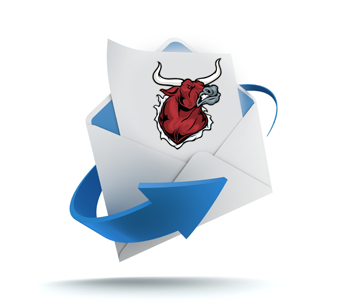
Get original “Bullvine” content sent straight to your email inbox for free.


